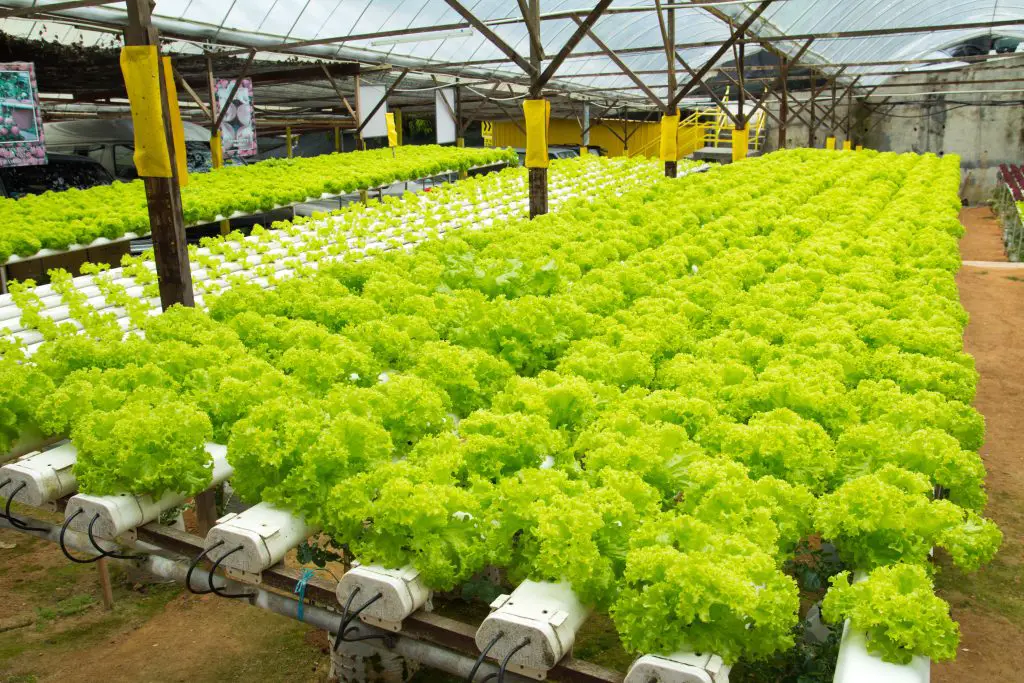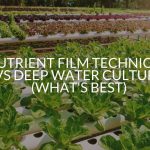If you’re trying to learn how to prepare water for hydroponics, you’ve come to the right place. There are a number of steps to follow to create the right nutrient-rich mixture, but it also helps to know the different micro and macronutrients available.
Once you figure out the right mixture, add it to room-temperature water and shake it up. However, the mixture you create should be based on the type of water you use as some water is naturally higher or lower in elements that plants will need to thrive.
How to Prepare Water For Hydroponics
Not all water is created equal and that’s especially true when you’re trying hydroponics. There are a handful of general steps to take that should have your water nutrient-rich for plants, but remember that you’ll have to adjust depending on the water source.
Identify The Water
They do make pre-made hydroponics nutrient kits, which you simply add to water and you’re done. Assuming you forgo that option, though, you’ll first need to decide what type of water you’re using.
The easiest way to do this is to contact your water supplier and ask for the latest water report. Otherwise, you can use a device called a pH, EC, or PPM meter that measures acidity levels and the amounts of nutrients in the water.
The idea is to use the PPM number to determine what the water already has and go from there. PPM will tell you how soft your water is as well, which falls around 60 ppm and is best for your plants.
Micro And Macro
Micro- and macronutrients are one of the most important topics to learn how to prepare water for hydroponics. The former are trace amounts of elements in the solution that influence growth and reproduction rate, with some common ones being iron, magnesium, and chlorine.
There’s no magic number that will make your hydroponic solution perfect, but the goal is to have around 9 or 10 micronutrients. Macronutrients are similar, but these are elemental compounds that have a greater effect on the plant like photosynthesis and chlorophyll.
Something In The Water
In hydroponics, you want to treat your water like the story of the 3 bears and have it just right. That means, ideally, your water will be room temperature between 70 and 75 degrees. It can be plus or minus 5 degrees, but too hot or cold can damage or affect your plant’s growth.
The pH meter mentioned earlier will tell you the acidity of your water, with the best results coming from a pH of around 6 or 7. With pH, remember that the lower number is more acidic. Chemicals will affect the pH greatly, so tap water tends to be closer to 8 or 9.
Keep in mind that nutrients will absorb into your plant and change the pH, so just make sure it’s in the range. Otherwise, there are a few things you can try to clean up your water’s pH from bad concentrations.
Large clusters of elements will form together with aluminum sulfate, which can then be filtered out. Water goes through filtration before it reaches you most of the time, but chlorine can accumulate. If that happens, just leave the water in the sun for a full day to dilute it.
Fill ‘Em Up
Which container you use for your hydroponics mixing will depend on the size of plant reserve you intend to feed, but the basic rule of thumb is to use a gallon jug for small areas and a 5-gallon container for larger fields.
The important part is that they’re food-grade, which are free of any added chemicals or ions. You’ll also want to get at least 2 containers for best results: One with a premade blend and one for your measurements.
Nutrients
With the nutrients, you have the option to add them directly to the water after being measured out or waiting until everything is accounted for. The latter is the most-accurate method, but it’s entirely up to you if you trust your abilities that much.
Either way, anything in a powder form should be measured with a scoop that won’t be reused in the kitchen. Some of the ingredients and compounds can be harmful to the touch, so don’t risk double-dipping with your scoop between hydroponics and cooking.
Use a graduated cylinder or something similar to measure liquid nutrients before adding everything into the water through a funnel. The most-common compounds added are calcium nitrate, potassium sulfate, magnesium sulfate, and potassium nitrate, but the amounts differ.
Mix Things Up
Before mixing, check the pH level to make sure the added nutrients haven’t elevated or lowered it out of a healthy hydroponics range. If that happens, you may have to use a pH booster or add something else.
However, once it’s ready, seal the container and shake it up. You can use a spoon to mix the solution, but the agitation of shaking will mix it faster and probably more thoroughly. As for the amount of resulting solution, that will depend on your hydroponics setup but make sure there’s enough to cover the reservoir pump.
Can You Use Rainwater For Hydroponics?
Rainwater is easier for some to obtain than others depending on where you live, but it can be used pretty well for hydroponics. However, it does fall on the low end of the pH and PPM scales so you might have to tweak those.
One thing to keep in mind with rainwater is that, while it’s free of the ground-based chemicals and contaminants that tap water has, it can be higher in some pollution-related elements if you’re near a lot of factories or something.
Can You Use Well Water For Hydroponics?
Well water can also be used for hydroponics with reasonable success, though it has the opposite problem of rainwater. Because it’s in the ground, chemicals or nutrients might seep in to affect the resulting pH.
Speaking of, well water can have a higher pH up to 8.5 and a PPM count way over the high end that will need to be accounted for with cleanings and filtration methods mentioned earlier.
Can You Use Water Softener in Hydroponics?
Technically, you can use any water for hydroponics but the high sodium levels in water softener will likely kill the plants. The better solution is to, once you’re sure you have hard water, mix in a tablespoon of baking soda for every 5 gallons of water to soften it.
That should take down the PPM for your hydroponics mixture, whether the premade or the one you mixed up. Soft water rests around 60 PPM, but anything under 200 can be used as long as you alter your nutrient measurements accordingly.

Best Water For Hydroponics
To reiterate, any type of water can be used for hydroponics with potential success but not all types are equal. With that being said, these are the main 4 types of water that people tend to use and which one is the best.
Tap Water
This is the easiest to use, because you literally can get it from the sink, but it’s far from ideal.
Pros
- Easiest to get or use
- Treated and filtered by the city you live in
Cons
- Chemicals used to treat it end up in the water
- Usually higher in PPM and will need to be filtered at home
- High concentrations make it a bad candidate as the “best”
Rainwater
Rainwater is a step up from tap water because the chemicals aren’t there, but it’s far from perfect.
Pros
- Free of chemicals and high concentrations in the ground
- Obtained naturally
- Can be easily gathered with a clean gutter
Cons
- Can be abnormally high of certain elements or compounds if you’re near more pollution
- If a gutter is used, the rainwater may be extremely dirty
- Only obtainable when it rains, so not the best option for people in drier climates
Well Water
Another good, natural option, well water is a good idea for hydroponics if you’ve got no other option.
Pros
- Good source of mostly-chemical free water
- Might not need much treatment or adjustment if the pH is just right
- Can be a good source for large amounts of water
Cons
- Generally higher pH and PPM
- Possibly absorbs chemicals through the walls of the well underground
Filtered
If you’ve ever used a filter on your faucet or one of the filtering pitchers, you’ll know that it’s better than nothing.
Pros
- Cleans the water and takes out chemicals better than normal tap water
- Cheap and easy to get
Cons
- Not as pure as other methods on this list
- Filters range from affordable to expensive depending on the purpose
Distilled
Tied for the “best” title, distilled water can be done at home or bought from a store pretty easily. To save time and money, you might even consider the latter option because it comes in gallon jugs.
Pros
- Can be made at home through evaporation and condensation
- Creates water that’s very pure with almost no contaminants and low PPM
Cons
- If done at home, distilling can be time-consuming
Reverse Osmosis
This option is probably the closest to distilling, with water being passed through a membrane to filter it.
Pros
- Relatively inexpensive
- You can easily find a reverse osmosis system online
- Gives you water that’s as close in purity to distilled as possible
Cons
- Requires a reverse osmosis system and membrane
- Can take time to do yourself
Recap
By now you should know how to prepare water for hydroponics, starting with figuring out which type of water you have and looking up the correct nutrient combination before measuring it all out and mixing it into a water container.
Remember that ghgh is the best kind of water to start with to maximize your hydroponics results, but you can always adjust the pH and PPM levels with filtration or releasing excess chlorine.




